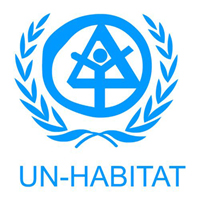|
Kakhovka Dam breach |
|||||||||||||||||
| What is affected |
|
||||||||||||||||
| Type of violation |
Forced eviction Demolition/destruction Environmental/climate event |
||||||||||||||||
| Date | 06 June 2023 | ||||||||||||||||
| Region | E [ Europe ] | ||||||||||||||||
| Country | Ukraine | ||||||||||||||||
| Location | Kakhovka Dam, Kherson Oblast | ||||||||||||||||
|
Affected persons |
|
||||||||||||||||
| Proposed solution | |||||||||||||||||
| Details |
|
||||||||||||||||
| Development | |||||||||||||||||
| Forced eviction | |||||||||||||||||
| Costs | |||||||||||||||||
| Demolition/destruction | |||||||||||||||||
| Land losses | |||||||||||||||||
|
- Land area (square meters) |
|||||||||||||||||
| - Total value | |||||||||||||||||
| Housing losses | |||||||||||||||||
| - Number of homes | |||||||||||||||||
| - Total value € | |||||||||||||||||
|
Duty holder(s) /responsible party(ies) |
|
||||||||||||||||
| Brief narrative |
In the early hours of 6 June 2023, Russian bombs breached the Kakhovka hydroelectric dam, retaining Ukraine’s biggest reservoir, on the Dnipro River in (Kherson Oblast). The destruction of the dam caused extensive flooding, with a domino effect on both humans and their environment. Its loss has cost Ukraine 41,700 cubic meters (m3) of water per day. The broken dam released 1.2–1.3 billion m3 of water, a volume equal to one-fourth of Ukraine’s water supply. Even if the dam were to be restored today, an estimated 33.5 years would be required to recover the loss of water.
Already in May 2023, Ukraine had announced its investigation to bring a case of ecocide against Russia before the ICC. To build its case, Ukraine subsequently dispatched a team of hundreds of ecological investigators to the area, overseen by Ukrainian prosecutor, Vladislav Ignatenko. General Prosecutor Andrii Kostin has cited 271 war crimes currently under investigation,[1] including specifically mentioned particularly dangerous Russian crimes such as blowing up dams, the shelling of nuclear facilities, and the attack on nuclear waste storage facilities.
Thereafter, Ukraine’s Ministry of Environment Protection and Natural Resources requested the support of UNEP to assess the environmental consequences. Through activation of its emergency response network, including through the UNEP/Office for Coordination of Humanitarian Affairs (OCHA) Joint Environment Unit (JEU), UNEP assembled a core assessment team consisting of 22 experts representing 13 institutions.
The environmental consequences have been vast. The drying of the emptied Kakhovka Reservoir has rapidly and perhaps irreversibly transformed a mature and fully functioning aquatic ecosystem of 70 years into a riverine type of ecosystem in an initial stage of development. Some of the protected areas located within the reservoir, such as the Velykyi Luh National Nature Park, were destroyed. Groundwater levels in the region have been falling with the disappearance of such a large body of water. As the burden of climate change increases, the region may be further affected in the longer run.
Downstream, the immense high-velocity flood caused losses in natural habitats, 12,000 hectares of forest, plant communities and species, inundating habitats and likely leaving toxic debris and sediments behind.[2] The impact led to a release of numerous chemical pollutants, including petroleum derivatives and liquid fertilizer. Even the assessment’s focus only on large structures containing significant amounts of chemicals has identified 54 pollution hotspots. The resulting exposure to chemicals is likely to affect vulnerable populations and pose additional risks to women and children, with long-term health consequences.
The destruction of the Kakhovka Dam killed dozens of people and submerged entire villages in flood water. It affected 4,377 households on the north side and 12,844 households on the south side of the dam, totaling 17,221 affected persons.[3] The breach inflicted almost €13 billion in economic L&D. The initial estimate for total recovery and reconstruction needs is $5.04 billion, and this figure is expected to grow as more detailed assessments are conducted. In the short term, $1.82 billion is needed for recovery efforts in the 2023/2024 period.[4]
Around 37,012 residential units were affected by the flooding, and 15% were damaged beyond repair. This number includes apartment units, single-family houses, and dormitories. Single-family houses have been the most affected (97.3% of damage), which indicates the significant impact on the rural landscape of Ukraine, including peri-urban communities. The extent of housing damage is spread across only two oblasts, with Kherson (98.4% of damage) being significantly more impacted than Mykolaiv (1.6%). UNEP estimated losses in the housing sector at US$66 million, which reflects the cost of demolition and debris removal and the Ukraine government’s one-time indemnity payment. That figure does not reflect bank losses and mortgage defaults, temporary rental and shelter provision by owners, or adjusted rental income losses.[5] For the housing sector lone, total damage is estimated at US$1.101 to US$1.502 billion.[6] [1] “Ukraine is investigating over 270 Russian war crimes against its environment,” Rubryka (28 November 2023),https://rubryka.com/en/2023/11/28/kostin-ukrayina-rozsliduye-ponad-270-voyennyh-zlochyniv-rf-proty-dovkillya/.[2] UNEP, “Rapid Environmental Assessment of Kakhovka Dam Breach Ukraine ,” 25 October 2023, p. xiii, https://wedocs.unep.org/bitstream/handle/20.500.11822/43696/Kakhovka_Dam_Breach_Ukraine_Assessment.pdf?sequence=3&isAllowed=y. [3] Ibid., p. 46. [4] Government of Ukraine and United Nations, Post-disaster Needs Assessment: 2023 Kakhovka Dam Disaster, Ukraine, October 2023), https://ukraine.un.org/en/download/145177/248860. [5] Ibid., p. 42. [6] Both Mykolayiv and Kherson oblast sustained severe damage due to the conflict however overlap is minimal due to the predominance of rural and peri-urban areas affected by the flooding and the significant number of single dwelling houses impacted (97.3% of damage is in single dwelling houses). Damages due to the war have been deducted from the total flood damages. 17,221 hhs: 4,377 households on the north side and 12,844 households on the south side[1] [1] UNEP, op. cit., p. 46.
UNEP, Rapid Environmental Assessment of Kakhovka Dam Breach Ukraine , 25 October 2023, https://wedocs.unep.org/bitstream/handle/20.500.11822/43696/Kakhovka_Dam_Breach_Ukraine_Assessment.pdf?sequence=3&isAllowed=y. | ||||||||||||||||
| Costs | € 0 | ||||||||||||||||













